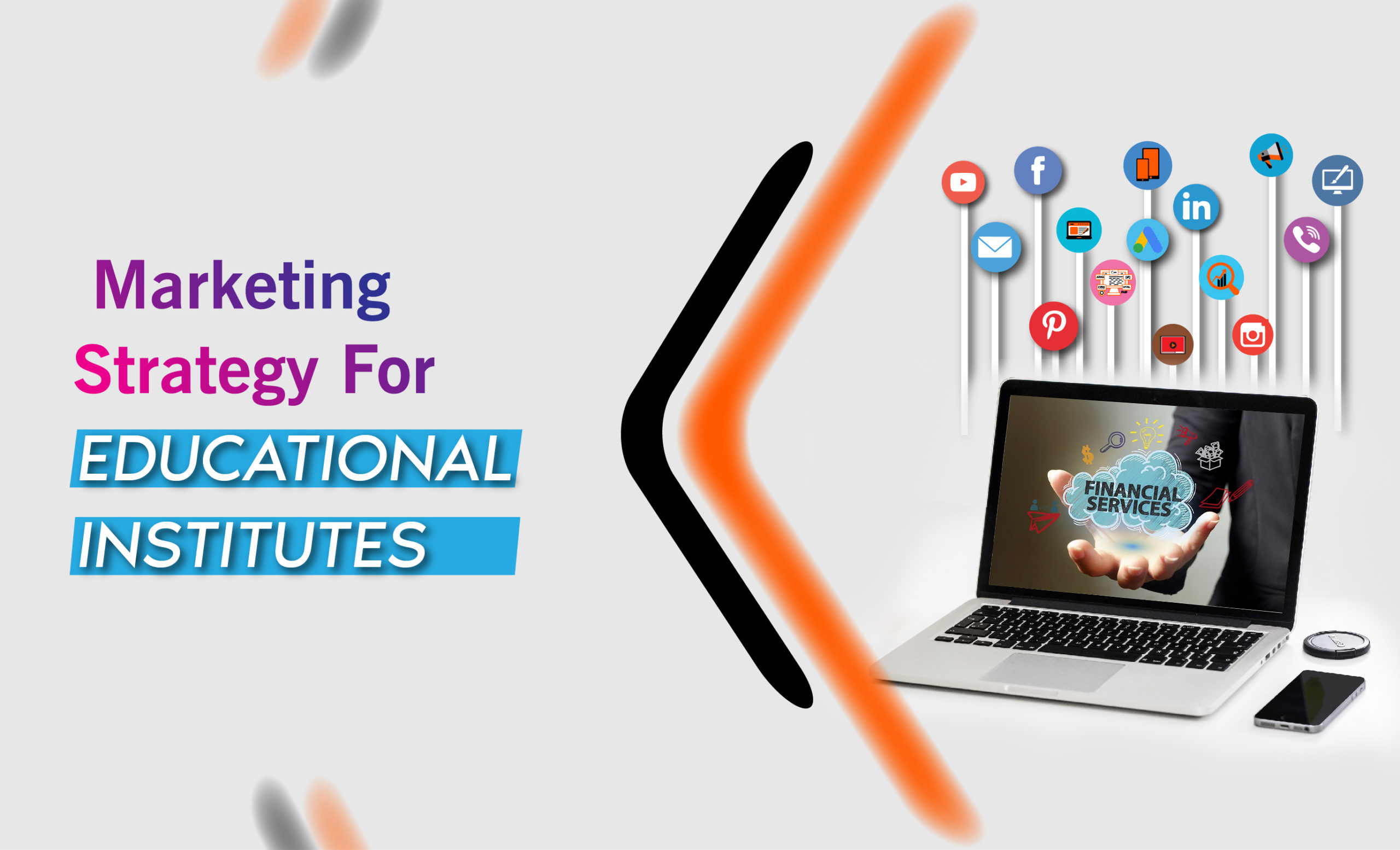Smart institutions are focusing on streamlining and improving their schools marketing strategy to make sure dollars are well spent. If you are a Educational Institutes
Marketer looking to improve your program, follow the below steps
There are many funding programs and non-profit organizations. For any non-profit institution, funding is divided into 3 main categories – Access, Shift, and Impact.
Access is given to schools that provide a good and complete report to the assessment team. This is valuable for two major reasons – it ensures that the institution under study is a real organization and each group/department in the institution receives the calculated funding.
Shifting funds to schools and institutions that are providing the greatest value is one way to ensure that funds are spent effectively.
A school’s marketing and strategic plan are interrelated. They should be developed together to bring about the greatest return on marketing dollars.
Marketing decisions should be based on the sum of the evidence, not the individual pieces.
Actual efforts should be compared to the promise in the marketing plans.
The information you need is by definition worth more than the time taken to obtain it.
There is a perfect trade-off between which parameters to measure or how to measure them.
The value or return on marketing investments is an essential element to decide how to spend marketing dollars.
Advanced marketing practices such as survey research provide data that is essential to understand the marketing mix.
Policy of marketing and strategic planning varies widely among institutions, and the same plan may not be the same for every program or department within an institution. But policy should be simple.
Discipline – be consistent in your thinking and planning.
Clearly define – define what your institution is, and define your strategy.
Make a realistic budget – the budget does not have to be perfect, but it should be realistic and dependable in reflect the needs of the school.
Consider the impact of marketing investments – how does your program maximize its returns from marketing dollars.
Manage performance – use new performance standards to evaluate the investments to improve ones future performance.
Build an objective system to measure success – use measurable criteria on performance to help manage the school’s spending.
Give performance feedback – create a feedback system to learn from what are done right, learn from what are done wrong, and learn the ways to improve your results.
Educational institutions are always looking for ways to improve the quality of their service. A training plan needs to have a foreseeable return on investment and take into consideration the costs of the experts, the costs of the training, the need for references, and the cost of the effort.
The goal is to improve the quality of service, not necessarily the quantity.
Goals – what are the goals of the area of the school that needs improvement?
Outcomes – what are the criteria to measure progress – are they numbers, grades, citations, etc?
Resources – how much financial, human, and technical capital to invest?
Issues – what are the difficulties involved in the process?
Courses – what education is needed to solve the problem?
Selection – what kinds of people are needed to solve the problem?
Process – how will people learn the new skills to solve the problem?
Training method – how long will it take to teach?
Plan – what is the payback period of investment into having the new kinds of people who will provide the improved service?
In real-world service systems, people make quick decisions. Some people make them based on hot tips, while others based on extensive research. Some people race to a line and ask “What Just Happened?” while others consider the long-term implications.
There are situations where the most efficient decision is not always the best, or most long-term decision.
Making the decision quickly is not necessarily a sign of a bad decision-maker.
Making the decision is not the time to be scared.
It is time to consider the consequences of quick decisions and the long-term implications.
Most often it is the quick, less expensive or less measurable decisions that will have significant long-term benefits.
Study the data.
Make the decision.
Public dialogues should take place in a public forum where people share input. This is the only way to get to the truth.
When facilitating public dialogues, let the technology do the work – use easy, fast, and intelligent ways to keep people involved in the process.
Technology is not a toy; It is a tool that can make a difference in the quality of learning and the effectiveness of service.
Focus on the future – focus on what is most important to the educational institution’s community.
Advantages?
The educational institution has its own service system for gathering, selecting, orienting, and maintaining information about the institution’s community.
The educational institution has a way to broaden the service it offers to the community in order to include a wider range of people.
And the educational institution can employ the systems and technologies to improve the quality of service and the accountability in service delivery.
And relevant topics of discussion should be around the future of the community and what it will take to provide quality services in the future.
And the conversation should be both theoretical and practical.
And the service system should be an extension, not a replacement, for the overall service system for the community.
Objectives – what is the outcome of each module in the educational program and the service delivery?
Informal education – ‘the way to meet the practical needs of clients, which can increase an individual’s skills, knowledge of their environment and effects it has on their life’
Professional education – “the way of acquiring specific theoretical knowledge, specialized knowledge, standards and values essential for the activity, obtaining a degree which is the professional title”
University education – “a general education at institutions whose educational system is based on the work of distinguished scholars, highly developed research, liberal and specialized training of those offering new and original contributions to their field of study”
Long term benifits of Marketing for Educational Institutes
- Decrease the number of distractions
- Increase quality of content
- Increase quality of presentation
- Make improvement a stated goal
- Provide staff with feedback
- Increase understanding of their market
- Assist in the planning processes
- Provide support to strategic planning
- Provide training of librarians
- Assist in developing information systems
- Foster public dialogue
- Allow for communication
- Provide information
- Increase interpersonal flexibility
- Essential in strategic planning
- Be an extension, not a replacement for existing service systems
- Encourages independent thinking
Outcomes of Marketing for Educational Institutes
- Decrease in administration time
- Decreased costs
- Decreased number of personnel replacements
- Reduced number of profit centers
- Less money spent on advertising
- Increased in numbers of potential customers
- Increased in staff discontent
- Scholarships may be decreased
- Service delivery depends on
- Strategic plan
- Budget
- Developers
All you need to know
- Marketing is built on an understanding of the three knowledge components – the product, the message, and the service. Each applies in a different way to different institutions.
- The university must serve its community members – both its admitted students and the public – to ensure relevant education.
- The language of marketing directs its focus on providing appropriate, effective, and relevant services to the public.
- Marketing has four functions – planning, budget development, resource allocation, and management of marketing process.
- Markets are defined based on the degree of freedom in choice, the potential of meeting individual needs, and the awareness of the need to meet the particular need. The university must think about these four key elements of marketing systems throughout the process of planning and development.
- The education institution’s sales staff must implement a practice leadership approach with an emphasis on the needs of each customer. The overall goal is to serve the needs of the client.
- All marketing activities should be carefully planned and monitored to ensure that they are serving the needs of the community. Marketing must be considered at all levels of planning and development.
- The key to successful marketing activities is to plan a program to improve the educational programs of the school. Development of products and services should support the strategic objectives of the university.
- Implementing a marketing plan is not a substitute for the need to satisfy the community.
- Marketing strategies and actions should be interrelated to ensure that they compliment the goals of the university.
- A marketing plan should translate the educational experience provided by the university into the language of the community.
- The goal of the marketing plan is to provide educational outcomes that will continue to serve the community well into the future.
- We will discuss the concept of providing relevant marketing services from the perspective of the student. An overall marketing plan must include all aspects of the educational program.
Conclusion?
If we don’t understand how the community operates, then we’re not going to be successful.
Implement marketing theory on an ongoing basis so that you receive the results you seek.
Focus on what is most important to the school.
Implement marketing strategy to assure that the two entities share a common language, and recognize that the two entities are interdependent.
And separate issue handling with issue avoidance.
Reduce the number of distractions.
Ensure that all communication messages be relevant to the issues they communicate.
Create appropriate budget and staffing levels to ensure you are matching the needs of the community to the level of service required.
Be aware of the issues that have a meaning and value to the community.
Ensure that the communication be both clear and concise.
And all marketing messages should have some educational value. All marketing messages should be meaningful.
Create mechanisms for staff feedback and training.
All marketing activities should increase the quality of the educational programs offered.
And promote an understanding of the problems that are the institutions responsibility.
Conclusion for Educational Institutes Marketing Strategy
The ultimate indicator of this health of an educational institution is the quality of the faculty, and the quality of the curriculum and academic programs. The teacher must have the requisite training and ability to achieve the task given to them. Extension educators must provide relevant market information to serve the needs of the students and the educators. Both professionals must have the attention of both the supervisor and the student. They must have the ability to work in unison to deliver the quality that is required. The interaction among the staff must assist students in actively participating in their education.
















